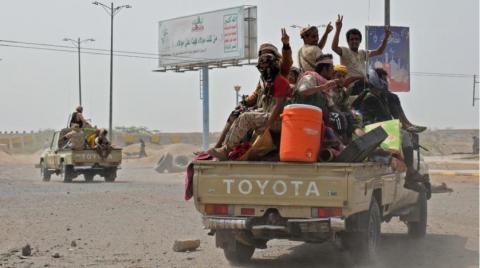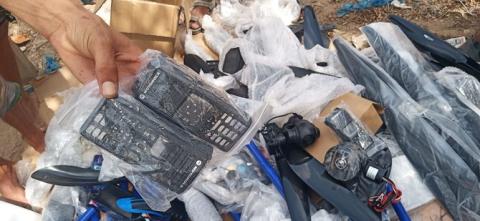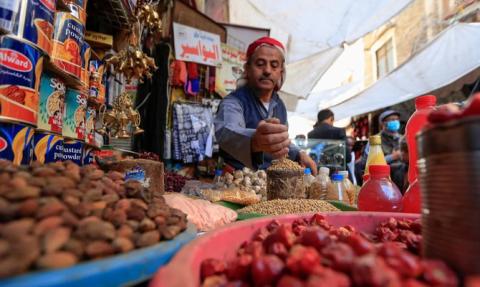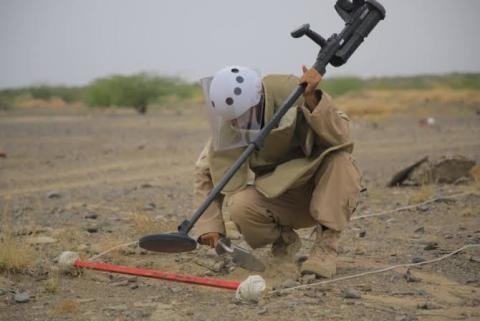Yemen's divided parliament growing further apart


As fighting continued in other areas of the country, part of Yemen's divided parliament met April 13 in Seyon for the first time since the civil war began four years ago. By April 16, the legislators were discussing a draft bill to classify Houthi rebels as a terrorist group.
The mostly Shiite, Iran-backed Houthis had suspended the parliament in February 2015. Last month, Yemeni President Abed Rabbo Mansour Hadi, a Sunni who leads the Saudi-backed internationally recognized Yemeni government, called the first session to order. Hadi, Vice President Ali Mohsen al-Ahmar and some of their supporters have been living in exile in Saudi Arabia for about nine months, but traveled to Seyon for the occasion.
The head of the General People's Congress, Sultan al-Barqani, was unanimously elected speaker by the 138 members who attended. Later, six more members attended subsequent sessions. The full parliament has 301 members.
In an April 16 statement, Barqani described the first session as “historic.” He postponed all further meetings until the end of the holy month of Ramadan, which lasts from early May to early June.
While the parliamentary session could be seen as further fragmentation of the Yemeni state amid the division between the internationally recognized government and the Houthis over the executive and judicial authorities, it pulled the rug out from under the 116 parliamentarians in Sanaa supporting the Houthis. That part of the parliament, which had resumed sessions in August 2016, is headed by Yahya al-Rai.
Trying to muster enough members for a quorum (half the total membership plus one, or 151), the Houthis also held elections April 13 to fill the vacant seats of 34 deceased parliamentarians. But the elections only filled the 24 seats in Houthi-controlled areas, leaving the Sanaa part of parliament with 140 seats.
The divided parliament is an extension of the split in Yemen’s other state institutions between the Houthis’ authority and the internationally recognized government. The country’s official news outlet produces two versions of the news. Each governorate has two governors. A Central Bank in Sanaa is controlled by the Houthis, while the one in Aden is run by the recognized government. This is all in addition to there being two heads of the Supreme Judicial Council and two public prosecutors.
The Yemeni parliament, whose members were last elected in 2003 for a six-year term, is still the same today. The opposition had refused to hold elections that were scheduled for 2009, demanding constitutional amendments. The ruling party was headed by then-President Ali Abdullah Saleh. The opposition agreed to postpone the elections for two years.
The Arab Spring events in 2011 and an assassination attempt that killed several people and injured Saleh also hampered legislative elections. (Later, Saleh resigned in 2012 and was assassinated in 2017.)
In September 2014, the Houthis’ takeover of the capital Sanaa in 2014 and their 2015 dissolution of parliament and suspension of the constitution prolonged the parliament term — as did Saudi Arabia's Operation Decisive Storm, launched in March 2015 in support of Hadi. That campaign was designed to limit Iran's power in Yemen.
Commenting on the Seyon session, parliament member Jaabel Taaiman Said, “Parliaments in the world are governed by majority, not by political divisions. The minority has no right to object to any decision taken by the numerical majority."
According to Taaiman's reasoning, the 138 members attending the Seyon parliament session constituted a quorum. “After excluding the 34 dead members of parliament, the legal quorum of half plus one would be 134 instead of 151," he said.
He noted that the April 13 session in Seyon — attended by the president, vice president, prime minister, ambassadors from 19 countries and parliamentarians representing all the Yemeni provinces — was in the best interest of Yemen’s unity. “This is a step toward establishing the federal state in accordance with the outcomes of the National Dialogue Conference [2013-14] that brought together all political components,” he noted.
Opposition parliament member Ahmed Saif Hashed Said, “Convening the parliament in Seyon in tandem with the elections in Sanaa is not coincidental. This falls within the project of tearing up, fragmenting and invading Yemen as much as possible and imposing full trusteeship over it.”
He continued, “The existence of more than one parliament would fragment Yemen … [and] expose the stability of Yemen to continuing threats and shake the region’s stability.”
Hashed urged the parliamentarians who met in Seyon to refrain from holding sessions that he said lack legitimacy and legal quorum, arguing that “by recognizing a Seyon parliament, they would be legitimizing the war and its outcomes at the expense of the interests of Yemen and its people.”
AFP.

Yemeni officials on Monday condemned arrests and prosecutions by the Iran-backed Houthi militia directed against media, journalists and celebrities…

Yemen's warring parties are gearing up for new waves of conflict in 2023 amid a lack of decisive steps towards sustainable peace, adding to the suf…

The UAE will help to recruit doctors and deliver crucial supplies for hospitals in Yemen under a major healthcare drive. The Khalifa bin…